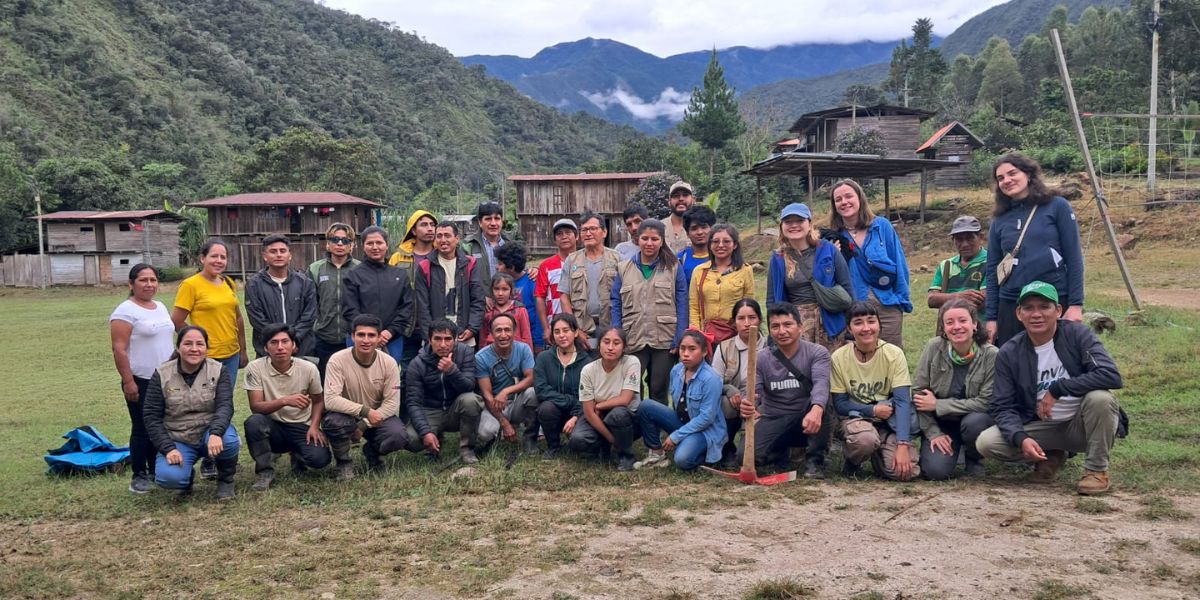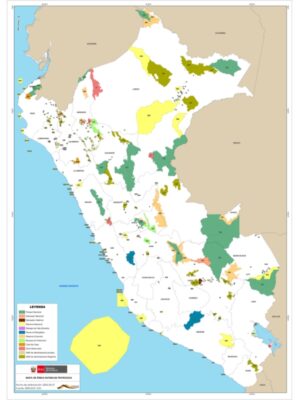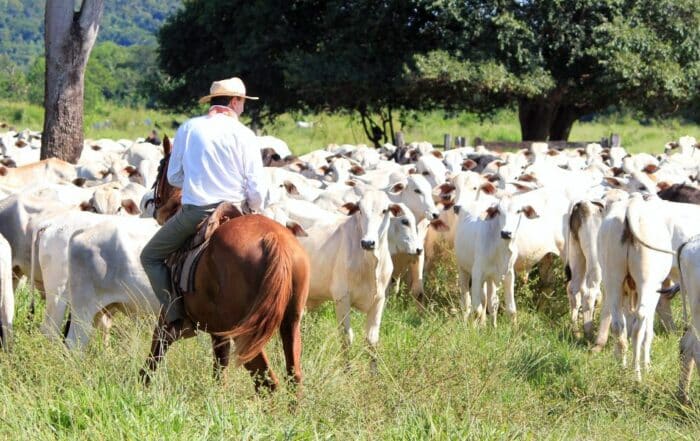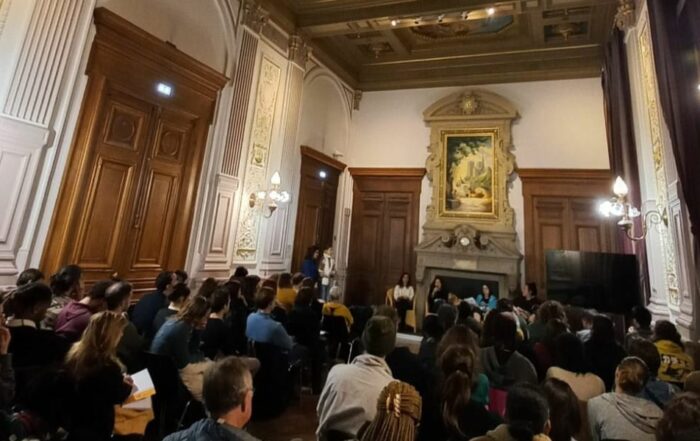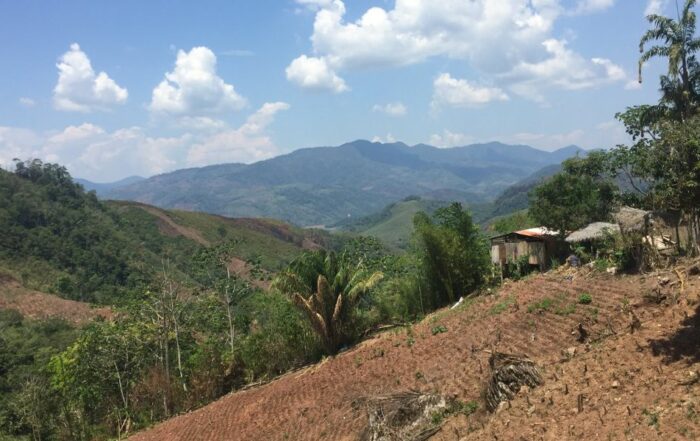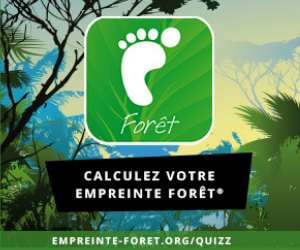Reforestation group of March, 16 ©Envol Vert
SERNANP (the National Service of Natural Protected Areas) is the agency in charge of ensuring the conservation of Protected Natural Areas (PNAs) in Peru. It works with nearby communities through a participatory management system and a sustainable development policy for the country.
Protected Natural Areas (PNAs) are terrestrial or marine areas recognized, established, and legally protected by the Peruvian government due to their importance for biodiversity conservation and their contribution to the country’s sustainable development.
There are ten different categories of Protected Natural Areas (PNAs), each defined by their specific characteristics and conservation objectives (National System of State-Protected Natural Areas, 2025).
Official map of Protected Natural Areas (PNAs) in Peru ©SERNANP
The SERNANP is divided into several levels of administration and management, with offices across the country. Each PNA is managed by a technical team composed of a direction, specialists, and park rangers, who also constitute the highest authority within that area. This team is in charge of monitoring and controlling the territory, environmental education, and tracking animal and plant species.
In the Pichanaki region, Bosque de Protección Pui Pui (BPPP)
Envol Vert works in close collaboration with the Bosque de Protección Pui Pui (BPPP) authorities, administered by SERNANP. This protected area covers approximately 60,000 hectares and is located in the Pui Pui mountain range. It is a territory that includes both jungle and mountainous areas, and is known for its great natural beauty.
This area is protected in particular because of its great hydrological potential (“Bosque de Protección Pui Pui,” 2025). In addition to its importance in supplying water to many communities, this forest has a high level of biodiversity and is home for many species that are emblematic of Peru, some of which are threatened with extinction according to the Red List of the International Union for Conservation of Nature (IUCN). This is the case, for example, of the yellow-tailed woolly monkey ( Lagothrix flavicauda).
Unfortunately, the BPPP is now threatened by deforestation and attempts at agricultural encroachment, particularly in its buffer zone.
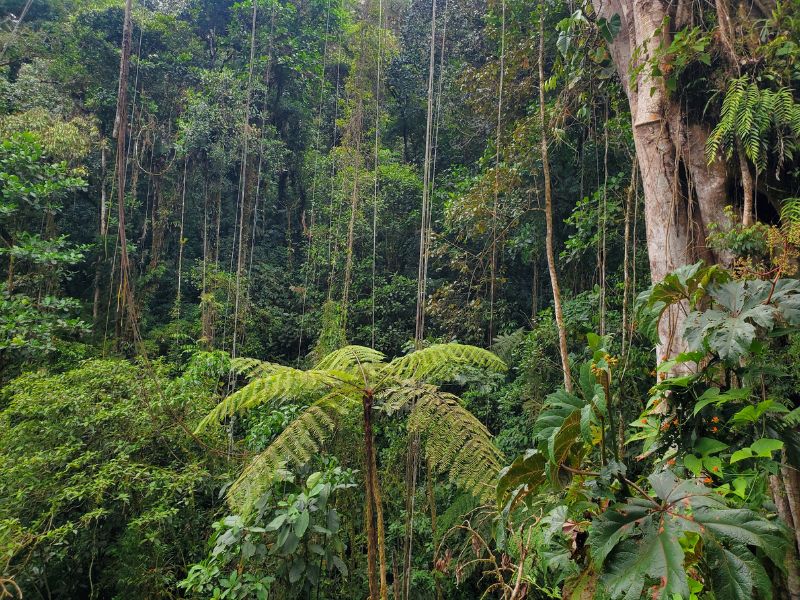
BPPP buffer zone ©Envol Vert
A shared commitment in La Nueva Florida
SERNANP is a key partner of Envol Vert in the village of La Nueva Florida, located in the Amazon rainforest in the buffer zone of the BPPP. Envol Vert has been working with this community since 2024, and the number of activities carried out in partnership with SERNANP is constantly increasing.
This cooperation helps to strengthen farmers’ skills, make projects more dynamic and attractive, and also provides better technical support and additional resources. SERNANP’s involvement is also a great source of motivation for the local population. In the future, the goal is to set up more working groups in this buffer zone, making it essential to continue building a relationship of trust with SERNANP.
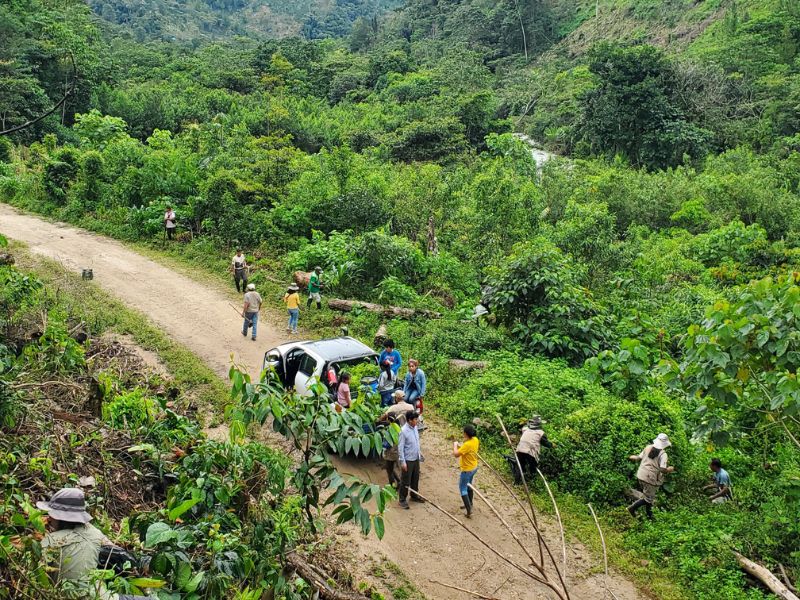
Reforestation of the area surrounding the road leading to La Nueva Florida © Envol Vert
A concrete action: reforestation
On Sunday, March 16, 2025, the day after the training session with the La Nueva Florida group (Workshop on native species based reforestation and forest conservation, Envol Vert, March 2025), SERNANP organized a reforestation activity with the support of the municipality and invited Envol Vert to join in. The goal was to gradually reforest the area along the road connecting La Nueva Florida to the main road by planting native forest species. This day marked the first step in the project.
The event brought together community members, the SERNANP team from the BPPP, municipal representatives, four members of the Envol Vert team, volunteers, and three French agronomy students (NALIA association). Together, they planted 710 trees of endemic species such as black walnut ( Juglans neotropica), cedar (Cedrela montana), bayo cedar (Cedrela angustifolia), tornillo (Cedrelinga cateniformis), and ulcumano (Retrophyllum rospigliosii).
This activity was a huge success, giving different people the chance to meet, share ideas, and plant trees together with enthusiasm. It was also really relevant to organize this reforestation right after the training on forest systems and the importance of endemic species, because it ended with a concrete and collective action. This day was an excellent opportunity to strengthen the links between farmers committed to environmental protection, SERNANP, and Envol Vert.
The Envol Vert team is very grateful to be able to collaborate with SERNANP for the preservation of Peru’s protected natural areas and their buffer zones.
Reforestation group of March, 16 ©Envol Vert
SERNANP (the National Service of Natural Protected Areas) is the agency in charge of ensuring the conservation of Protected Natural Areas (PNAs) in Peru. It works with nearby communities through a participatory management system and a sustainable development policy for the country.
Protected Natural Areas (PNAs) are terrestrial or marine areas recognized, established, and legally protected by the Peruvian government due to their importance for biodiversity conservation and their contribution to the country’s sustainable development.
There are ten different categories of Protected Natural Areas (PNAs), each defined by their specific characteristics and conservation objectives (National System of State-Protected Natural Areas, 2025).
Official map of Protected Natural Areas (PNAs) in Peru ©SERNANP
The SERNANP is divided into several levels of administration and management, with offices across the country. Each PNA is managed by a technical team composed of a direction, specialists, and park rangers, who also constitute the highest authority within that area. This team is in charge of monitoring and controlling the territory, environmental education, and tracking animal and plant species.
In the Pichanaki region, Bosque de Protección Pui Pui (BPPP)
Envol Vert works in close collaboration with the Bosque de Protección Pui Pui (BPPP) authorities, administered by SERNANP. This protected area covers approximately 60,000 hectares and is located in the Pui Pui mountain range. It is a territory that includes both jungle and mountainous areas, and is known for its great natural beauty.
This area is protected in particular because of its great hydrological potential (“Bosque de Protección Pui Pui,” 2025). In addition to its importance in supplying water to many communities, this forest has a high level of biodiversity and is home for many species that are emblematic of Peru, some of which are threatened with extinction according to the Red List of the International Union for Conservation of Nature (IUCN). This is the case, for example, of the yellow-tailed woolly monkey ( Lagothrix flavicauda).
Unfortunately, the BPPP is now threatened by deforestation and attempts at agricultural encroachment, particularly in its buffer zone.

BPPP buffer zone ©Envol Vert
A shared commitment in La Nueva Florida
SERNANP is a key partner of Envol Vert in the village of La Nueva Florida, located in the Amazon rainforest in the buffer zone of the BPPP. Envol Vert has been working with this community since 2024, and the number of activities carried out in partnership with SERNANP is constantly increasing.
This cooperation helps to strengthen farmers’ skills, make projects more dynamic and attractive, and also provides better technical support and additional resources. SERNANP’s involvement is also a great source of motivation for the local population. In the future, the goal is to set up more working groups in this buffer zone, making it essential to continue building a relationship of trust with SERNANP.

Reforestation of the area surrounding the road leading to La Nueva Florida © Envol Vert
A concrete action: reforestation
On Sunday, March 16, 2025, the day after the training session with the La Nueva Florida group (Workshop on native species based reforestation and forest conservation, Envol Vert, March 2025), SERNANP organized a reforestation activity with the support of the municipality and invited Envol Vert to join in. The goal was to gradually reforest the area along the road connecting La Nueva Florida to the main road by planting native forest species. This day marked the first step in the project.
The event brought together community members, the SERNANP team from the BPPP, municipal representatives, four members of the Envol Vert team, volunteers, and three French agronomy students (NALIA association). Together, they planted 710 trees of endemic species such as black walnut ( Juglans neotropica), cedar (Cedrela montana), bayo cedar (Cedrela angustifolia), tornillo (Cedrelinga cateniformis), and ulcumano (Retrophyllum rospigliosii).
This activity was a huge success, giving different people the chance to meet, share ideas, and plant trees together with enthusiasm. It was also really relevant to organize this reforestation right after the training on forest systems and the importance of endemic species, because it ended with a concrete and collective action. This day was an excellent opportunity to strengthen the links between farmers committed to environmental protection, SERNANP, and Envol Vert.
The Envol Vert team is very grateful to be able to collaborate with SERNANP for the preservation of Peru’s protected natural areas and their buffer zones.

